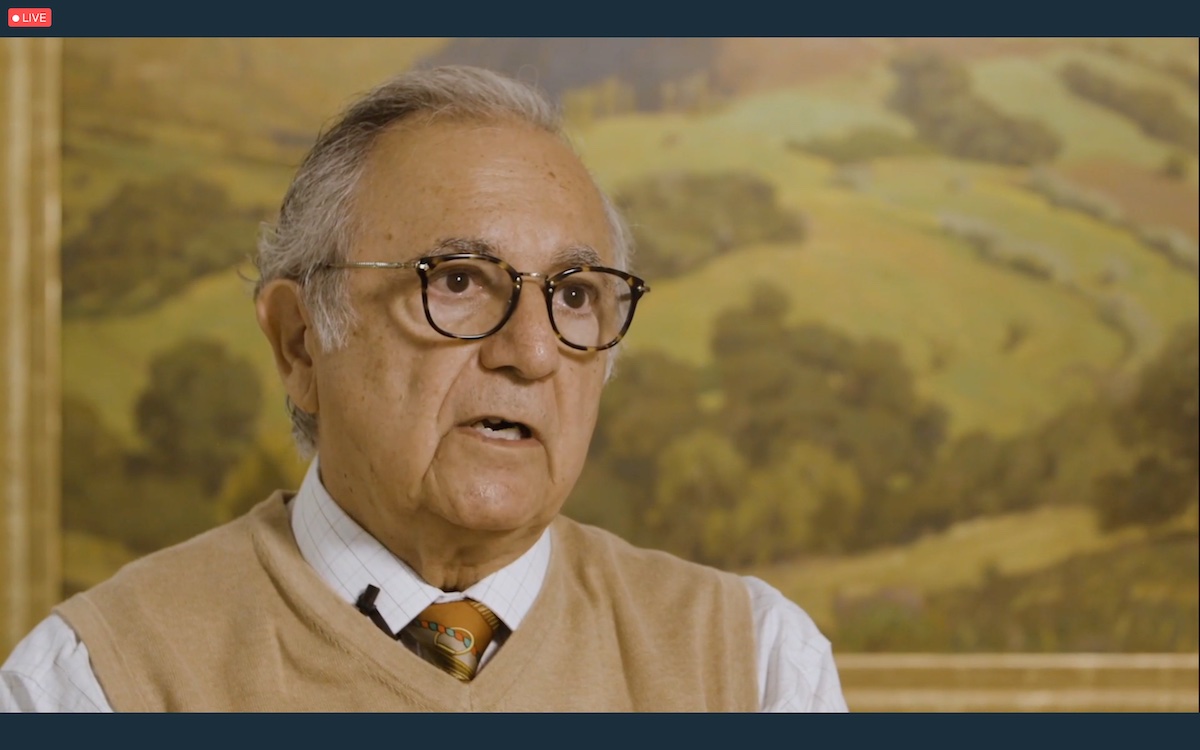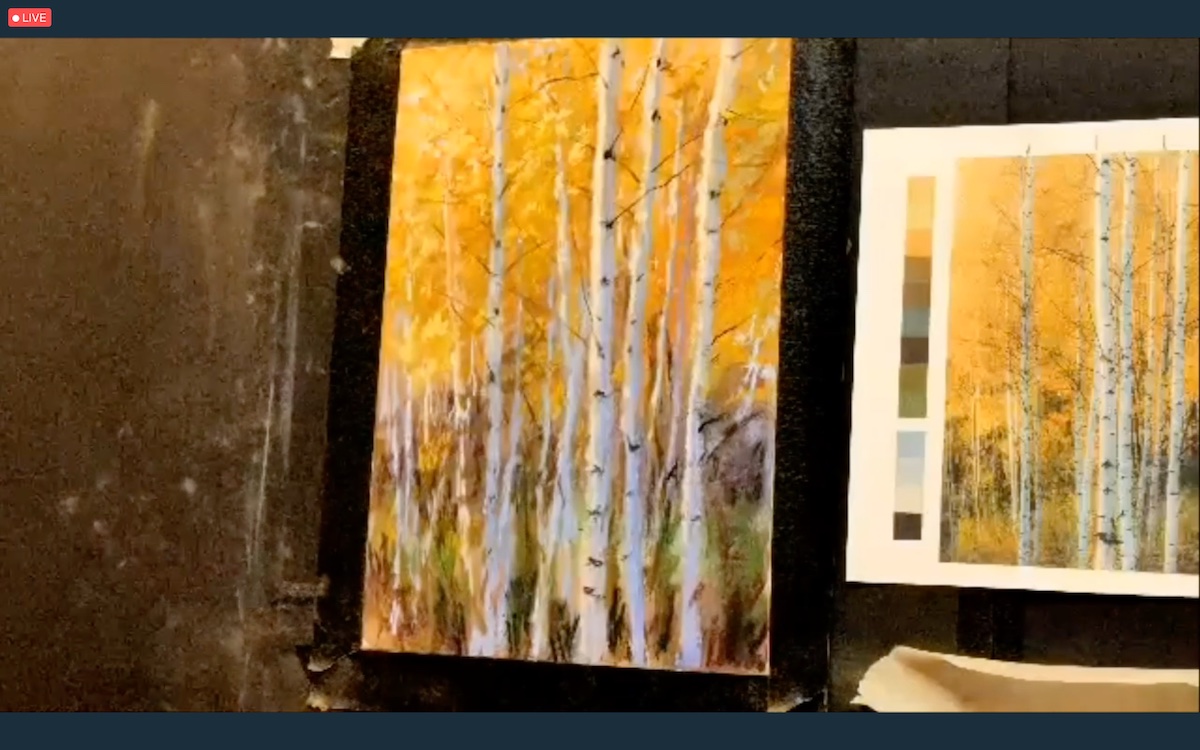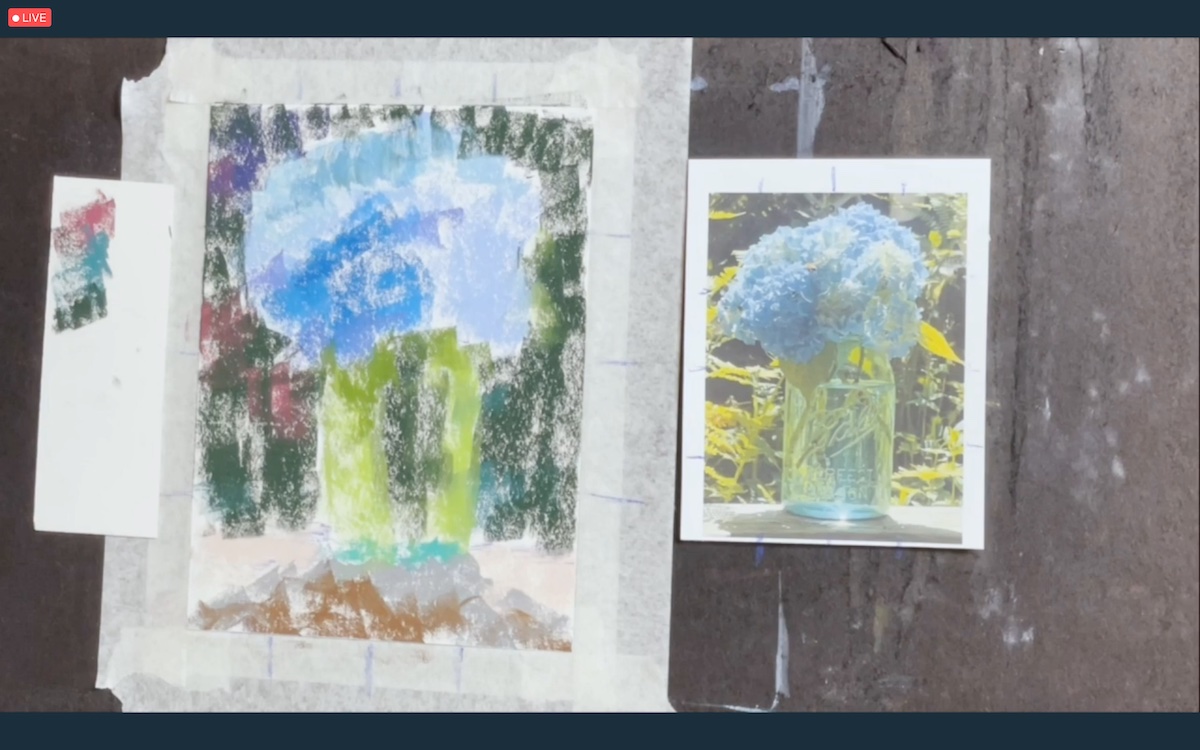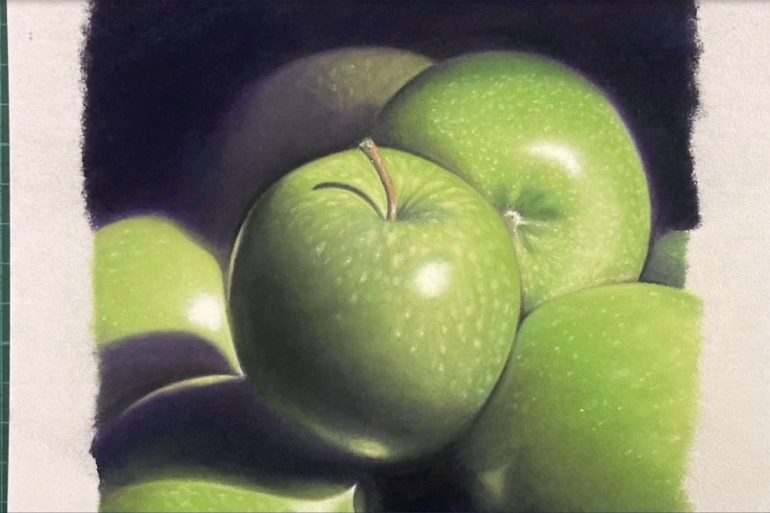
This post is also available in:


The second edition of Pastel Live kicks off with participants from fifteen countries around the world. Pastel Live is the four-day event entirely dedicated to pastel that boasts a faculty of more than thirty of the most internationally renowned artists.
The beating heart around which the Pastel Live universe revolves is, as always, that of the ecclectic Eric Rhoads, supported by the prodigious team at Streamline Publishing, always willing to help the public struggling with any kind of problem.
If you subscribe to Pastel.Today you will have the opportunity to receive the weekly newsletter containing information about: techniques, tips and various dedicated insights. Signing up is free and you can do so at the following link: https://pasteltoday.com/newsletter/
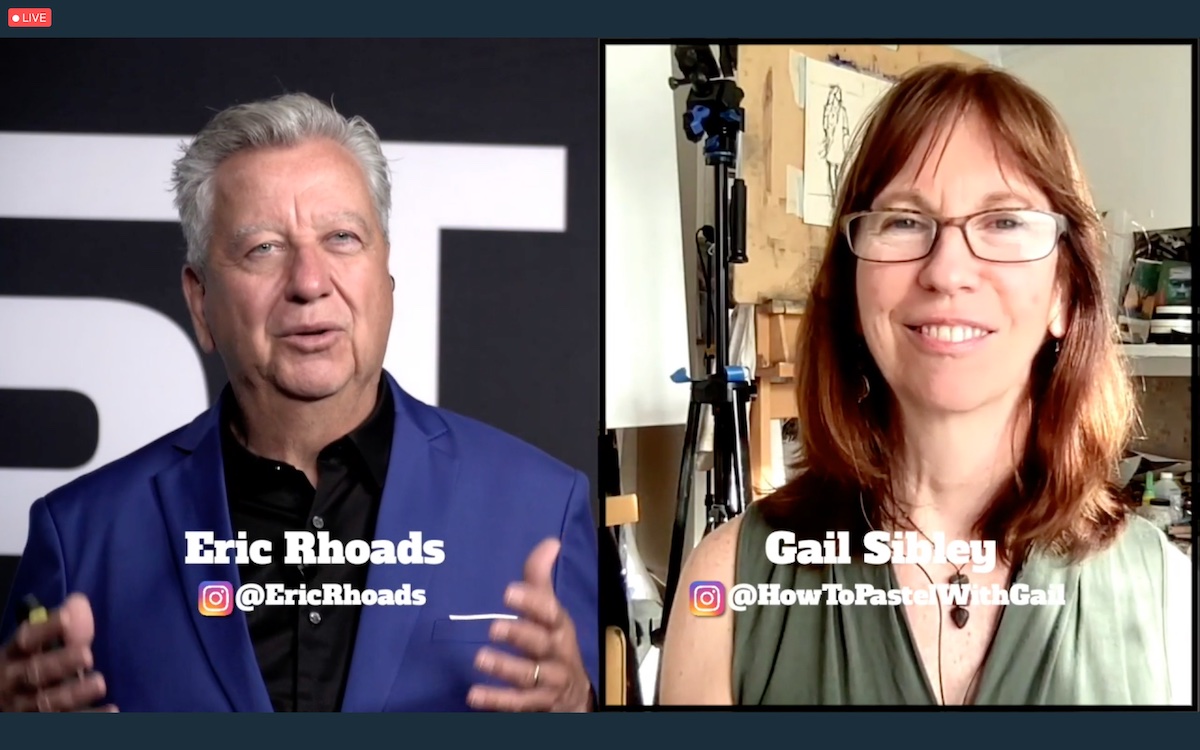
A great fan of nocturnal atmospheres, it was Doug Dawson who got into the thick of the demonstrations with a cityscape at dusk, in which he recreated the illusion of night.
According to Doug Dawson, pastel is the most useful and versatile medium for approaching colors and their harmony from a limited palette that allows for a thorough understanding of colors and their harmony. Studying pastel, learning how to manage its layering is also a useful tool to apply to other art techniques, such as oil, which is why Dawson’s demo is useful for all art mediums. Before approaching the demo, the artist made a small initial sketch in which he evaluated the harmony of the colors he chased used for the painting on the sheet.
Sheet that he previously covered with three layers of gesso. A material he personally makes according to his own recipe that he generously shared with the audience. The reason he prepares the sheet is his need to “kill the surface,” as the artist states. Approaching the painting of a scene at night, according to Dawson, means accepting certain “postulates” that serve to render lights and forms truthfully at night, and that involve: the existence of a halo that surrounds each body and remains unchanged as the light changes; increasing distances that diminish the definition of the images, i.e.: by increasing depth, details get lost, edges and forms become softer, color becomes colder and grayer, and the contrast between values decreases. According to Dawson to make a truthful night landscape it is necessary to maintain a background five times darker than the shadows in light because, according to Dawson: “Art is basically an exaggerating noise” and it is up to the artist to put this noise back in order.
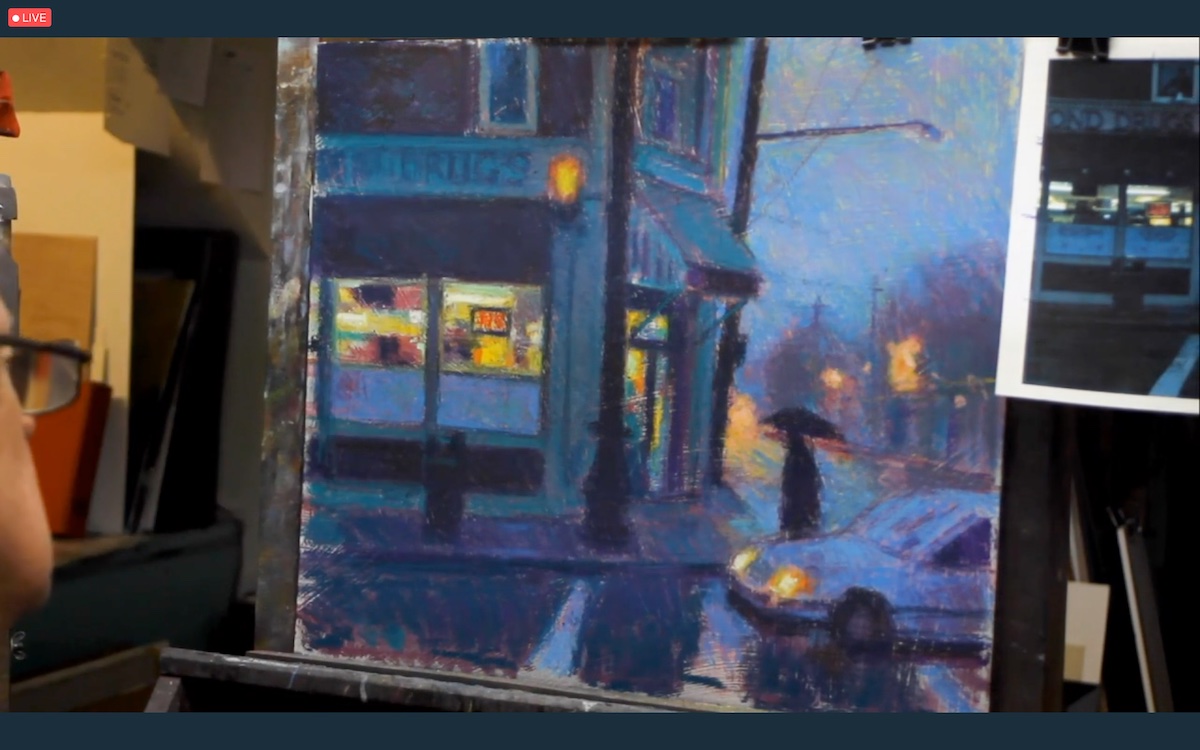
Running on the edge between realism and hyperrealism is the portrait created by Scottish artist and teacher Lynn Howard, who works primarily with pencil pastels. The philosophy with which Howard approaches art starts from the importance of observation: “Its so important to get the eyes right,” said the artist, who advises squinting as much as possible to bring into focus all the tonal nuances of the face. If she based her choice of skin tones on the tone of the paper to achieve skin tone, she captured all the nuances of the face by analyzing the planes of the head. “Every artist makes mistakes, even the most experienced,” said the artist, who insisted, in particular, on the importance of recognizing and being able to correct one’s mistakes, intervening on the proportions of the face and adjustments of skin transition, in which soft edges alternate with hard edges, in a continuous back and forth. In addition to maintaining a darker shade of complexion than the original -to avoid the pale effect of the face- the artist reiterated, as she also teaches her students at the University of Strathclyde, the importance of drawing from life because only by observing from reality can we sensitize our minds and translate the character of the subject into its portrait.
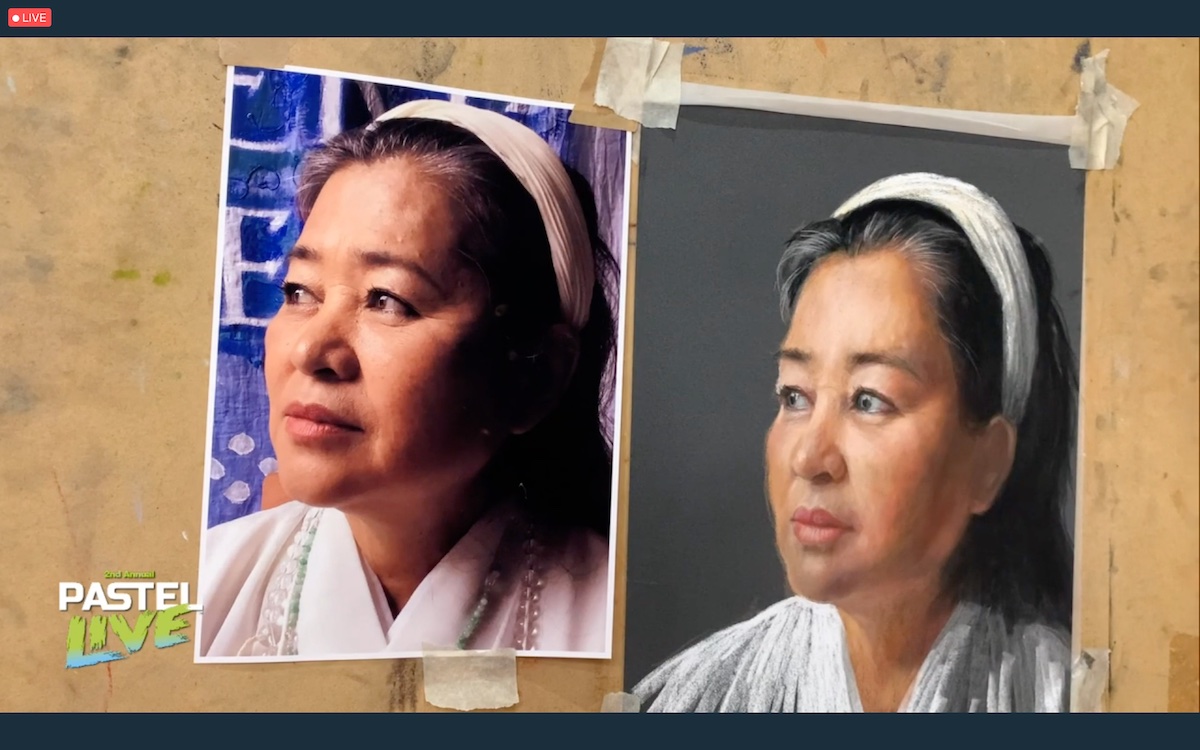
Gestures and marks are the peculiarities that distinguish the style of Jen Evenhus who declares, “My style is the beauty of imperfection.” A phrase that also represents her way of painting made up of broad and virtuoso gestures in which the spreading of color is done by exerting strong and decisive pressure with the angular sides of the stick crayons, with which she makes sharp and angular edges in a continuous search for definition and redefinition of forms. About her use of pastel the artist declares, “Don’t be afraid to make strokes; be confident, they will take you far away.” For the demonstration session she depicted one of his favorite subjects: radishes. A decidedly eye-catching subject especially for her use of red color that literally explodes on the paper on which she has previously laid an underpainting in shades of blue. Red is a color that normally tends to frighten artists, but Evenhus suggests using it without reservation or fear, simply having fun and being inspired by the unexpected. In her paintings, especially in the early part, it is chaos that reigns supreme, and it is from chaos that the artist vents and channels her energies. To create interesting textures, Evenhus, relies on two particular tools: the tines of a comb and a twig, collected during a summer spent in Maine. With these two very simple and common tools she drags color by breaking up compositional edges. An important factor on which Evenhus particularly insists is the filling of negative spaces at the end of the composition, which brings out the composition in all its three-dimensionality.
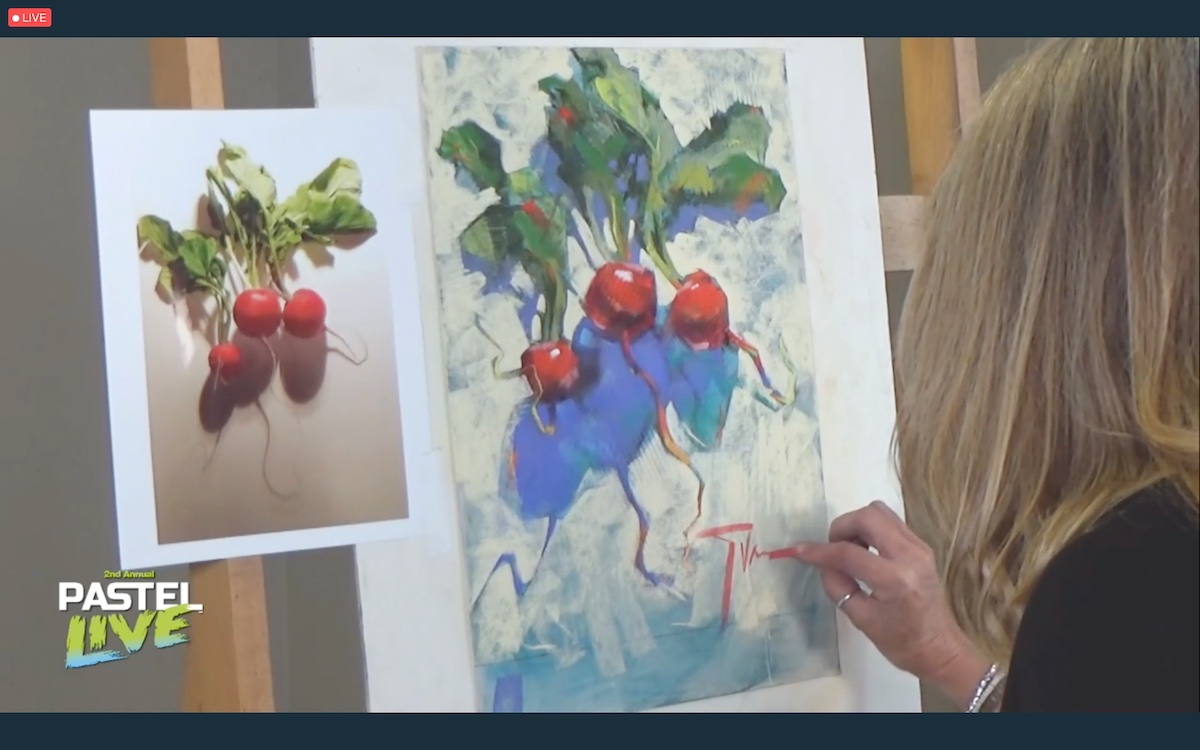
What do Rita Kirkaman and Albrecht Dürer have in common? Undoubtedly a passion for rabbits. In fact, one of the Renaissance painter’s most famous paintings, now housed in the Albertina Museum in Vienna, depicts a rabbit. A subject that artist Rita Kirkaman also loves to depict and proposed for the Pastel Live demonstration. Starting with an interesting priming approach that precedes the final pastel drafting, Kirkman, initially overlaid three different layers of Golden’s fine pumice gel, with which she defined the rabbit’s forms, offering, already at this level, the possibility of seeing the animal’s volumes three-dimensionally. She later emphasized this distinction with the help of an Terra Cotta-colored primer with which she distinguished dark tones from semitones and highlights. Kirkman considers herself a “primer addict” because in her opinion the primer is able to strengthen the grittiness of the painting while providing excellent coverage.
After the primer dried almost immediately, she applied the pastel colors by referring to the photographic image, which also veers, thanks to Photoshop, into shades of gray, thus being able to perceive all the tonal variations in the composition. “You can ignore colors, which are always relative, to focus on tonal values and temperature, which are the basis of successful composition,” said the artist. An amiable and extremely organized character, Kirkman demonstrated how she tends to break all those rules of starting with the darkest tones and then deriving the lightest tones, and vice versa. In pastel composition, in fact, she established the darkest and the lightest value at the same time and then worked on semitones to refine the harmony of the composition.
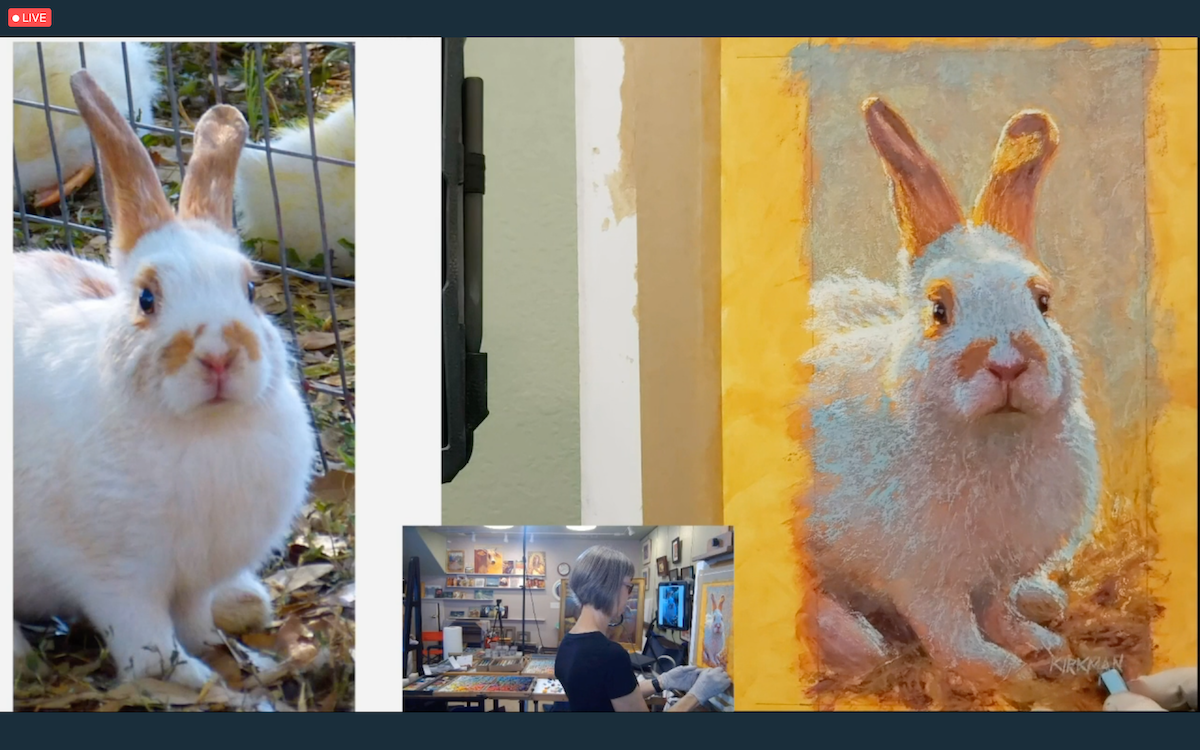
Called “the gem of Palo Duro,” Bethany Fields executed for the demonstration a landscape excerpt of the mastodontic Palo Duro Canyon, Texas, the country in which she resides and which allowed her to explore the beauty of wilderness in all its forms. Although it is a painting of a landscape Fields’ attention was mainly focused on the realization of the sky, which functions as a mirror and about which she declares, “Clouds have their own shape, just like trees.” Sky, which, when she was a child, she said she always represented in orange. It was in refining her artistic sensibility that she grasped the multiplicity of shades that, together, concur in the completeness of the image. According to Fields, the artistic representation of a landscape stimulates problem solving skills, which are also indispensable in everyday problems. While using a varied color palette her favorite color is blue which she uses in a thousand different shades although her favorites include: Terry Ludwig’s Best of the Blues and Great American’s Beacon Blue.
Her approach to painting is a continual back and forth, partly due to the use of alcohol and the fan fun brush, with which she amalgamates colors. After the drafting of the large shapes she moves on to the treatment of the small shapes, and especially at the end of the composition she spreads a few small touches of pastel here and there, without exerting any pressure, with which she emphasizes the atmosphere. One characteristic of the artist is her background in photography, which has led her over time to make iPhone photographs of which she cuts out details, because, as the artist says, “You don’t have to be afraid to cut and crop out areas of the piece if they’re not serving the painting.”
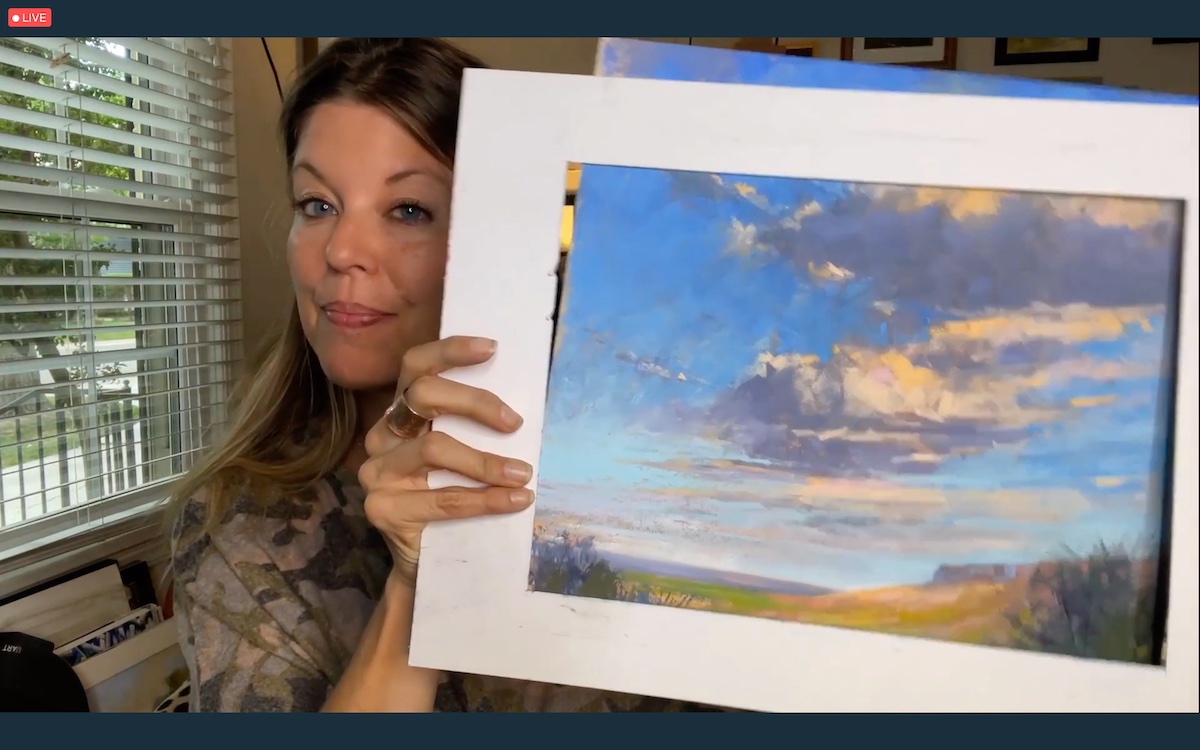
The last demonstration of the day was by New Zealand-born photorealist artist Michael Freeman who created an extraordinary still life work in which he depicted a very simple subject: juicy apples.
To the actual demonstration the artist anticipated an extraordinary technical lecture in which he unveiled step by step all the necessary steps for creating a photorealistic drawing in which, “The goal is to achive a good transition of colors changing,” Freeman said. He then reviewed all the steps involved in the realization: from the selection of the image, to the cross-hatching and faithful transfer of the photograph to the sheet, to the selection of colors and their amalgamation until creating a continuum in the perception of tonal variations, not forgetting the creation of the background that allows the objects to emerge from the sheet and the securing of the finished work ready to be shipped to the buyer.
Freeman said that pastel is an exceptional medium for photorealist painting because it allows for levels of depth and rendering that have a WOW effect and that more often than not prompt the viewer to wonder if it is really a painting or rather a photograph. The artist also admitted that making photorealistic paintings requires a lot of effort in terms of dedication, time and patience because of the attention to detail that this genre entails. However, the levels of detail according to Freeman is at the discretion of the artist who, especially in the beginning, must choose to represent an object that he or she likes and is curious about.
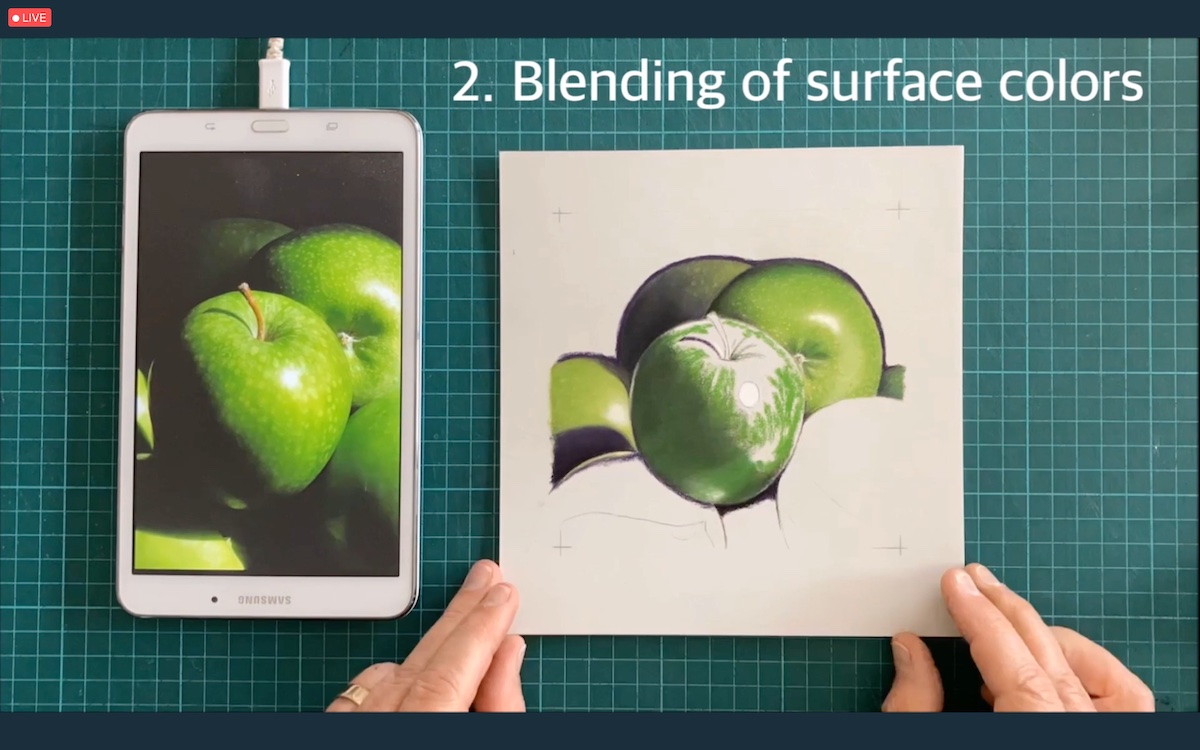
Among the day’s sponsors Jean Stern told about the historical importance of LPAPA -Laguna Plein Air Painting Association- and especially its relevance in the contemporary social fabric with a close look at children’s face and their education.
To join LPAPA and benefit from all the activities organized by the historic society, you do not need to reside in California but simply can click on the following link: https://lpapa.org/join/
Among the artists of the day, the talented Susan Kuznitsky, who delighted the audience in the previous edition, was featured in two different demonstrations for the event’s platinum sponsors: Blick Art Materials and Savoir Faire.
There were many ways to approach pastel unveiled on the first day of Pastel Live: a thousand different combinations that highlighted the peculiarities of this medium that is as vibrant and versatile as it is surprising, and many more will follow in the next two days of the convention.
A friendly reminder: after this year’s exciting event in Santa Fe, NM, the Streamline Publishing staff reminds all attendees that the next PACE -Plein Air Convention and Expo- will be held in Denver, CO, May 20-25…registration is open and places are limited: sign up.
(on the title the fabulous photorealistic work of Michael Freeman)
